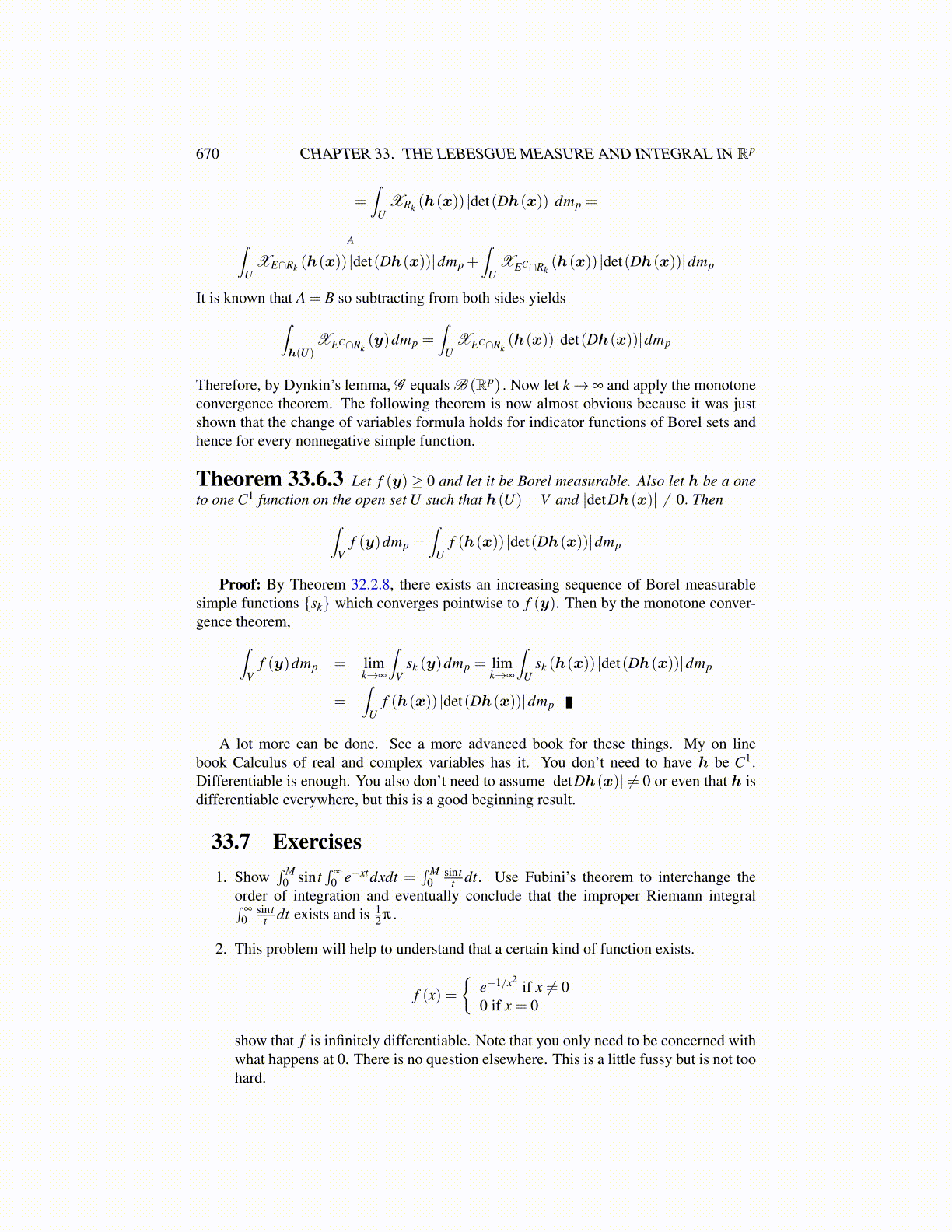
670 CHAPTER 33. THE LEBESGUE MEASURE AND INTEGRAL IN Rp
e−(2−2ln2)s2. Consider the integrand in the above for s > 1. The exponent part is
−s2
2(s√
2x
)2
(s
√2x− ln
(1+ s
√2x
))=−s2
(√2
s√
x− 1s2 x ln
(1+ s
√2x
))=−
(√
2√
xs− x ln
(1+ s
√2x
))
The expression(√
2√
xs− x ln(
1+ s√
2x
))is increasing in x. You can show this
by fixing s and taking a derivative with respect to x. Therefore, it is larger than(√
2√
1s− ln
(1+ s
√21
))and so
exp
(−s2h
(s
√2x
))≤ exp
(−
(√
2√
1s− ln
(1+ s
√21
)))=
(1+ s
√2)
e−√
2s
Thus, there exists a dominating function for X[−√ x
2 ,∞](s)exp
(−s2h
(s√
2x
))and
these functions converge pointwise to exp(−s2
)so by the dominated convergence
theorem,
limx→∞
∫∞
−√
x/2exp
(−s2h
(s
√2x
))ds =
∫∞
−∞
e−s2ds =
√π
See Problem 10 on Page 239. This yields a general Stirling’s formula,
limx→∞
Γ(x+1)xxe−x
√2x
=√
π .
16. This problem is on the Dirichlet integral which is∫
∞
0sinx
x dx. Show that the integrandis not in L1 (0,∞). However, verify that limr→∞
∫ r0
sinxx dx exists and equals π
2 . Hint:Explain why
∫ r0
sinxx dx =
∫ r0 sinx
∫∞
0 e−txdtdx. Then use Fubini’s theorem to write thislast is equal to ∫
∞
0
∫ r
0sin(x)e−txdxdt
Integrate by parts in the inside integral to obtain
=∫
∞
0
1t2 +1
− e−rt(
cosr1+ t2 + t
sinr1+ t2
)dt
=π
2−∫
∞
0
1√1+ t2
e−rt cos(r−φ (t))dt
Explain why the second integral converges to 0 as r → ∞.